Here's What You Need To Know About Sugar In Granola
#30DaysofSugar
Why Granola Is and Only SHould Be eaten as A sweet high-sugar treat
Although it’s often seen as a healthy and filling way to start the day, granola is packed with hidden and not-so-hidden added sugar. Yep, it turns out that bowl of granola could be higher in sugar than a can of soda. In this post, learn how that crunchy combination of oats and honey syrup - often seen as healthier that traditional cereals, like Froot Loops - is likely blowing your sugar intake out of the water, and the lowdown on when and how to indulge in this sweet granola treat.
Although it’s often seen as a healthy and filling way to start the day, granola is packed with hidden and not-so-hidden added sugar. Yep, it turns out that bowl of granola could be higher in sugar than a can of soda. In this post, learn how that crunchy combination of oats and honey syrup - often seen as healthier that traditional cereals, like Froot Loops - is likely blowing your sugar intake out of the water, and the lowdown on when and how to indulge in this sweet granola treat.
Good old granola is loved by many: from outdoorsy folks and full on healthy eaters, to simply health conscious consumers alike.
If you love to have a nice big cold and crunchy bowl of granola for breakfast in the morning, you might be patting yourself on the back for your rocking nutritious choice.
And why not?
After all, you can find granola in health food stores, and even in the large chain grocery stores you can see labels stamped on the boxes stating how “pure,” “natural,” and “protein filled” this crunchy breakfast is.
You also know how great this ‘healthy’ breakfast’s reputation is, so why wouldn’t you feel happy and glad that you chose this breakfast as part of your healthy contribution to your body?
The problem is though that granola isn’t as healthy as you thought it was.
Wait, what? Granola isn't good for me?
I know, I love myself a crunchy serving of granola, but unfortunately I now enjoy my favourite brand of granola, Love Crunch, only as a treat. 😢
Here’s what you need to know about sugar in granola.
We all know that cereals like Cocoa Puffs and Froot Loops are loaded in sugar and are super unhealthy. But listen up, if you’re eating granola as your healthy breakfast cereal alternative, you could be getting a large dose of SUGAR too!
The fact is that granola isn’t actually healthy - it’s actually packed with sugar - so much so, that in some cases your bowl of granola’s sugar and fat content can rival that of a serving of Ben and Jerrys ice cream.
Your definitely need to get the facts before you eat your next bowl of granola.
But is granola healthy at all?
Some granolas may be high in nutrients, but most versions out there are LOADED with calories and sugar, more so than even an average breakfast cereal. Nutritionist Anna McNulty says that there is no one formula for granola, but it does tend to be typically made from toasted rolled oats, some nuts or seeds and dried fruit, so whether it’s healthy depends on the other ingredients and how it’s made.
With the main ingredient granola being oats, it CAN be a balanced and healthy options, but the oats in granola are ruined when they’re combined with honey, sweet syrups, nuts, chocolate, dried fruits and other added sweeteners - all of which increase the sugar and calories.
So yes, granola can be good for you, but you need to watch out.
If you choose carefully, you can get a bowlful of protein, fiber, healthy fats, etc, but you need to first know how to navigate and understand all of granola's health ruining tricks.
Here is what you should know about granola before eating - so you can be a healthy and savvy consumer.
There is no one formula for granola, but it does tend to be typically made from toasted rolled oats, some nuts or seeds and dried fruit, so whether it’s healthy depends on the other ingredients and how it’s made.
Oats are filled with fiber, which can help lower cholesterol. And nuts provide healthy fats and dried fruits contain potassium, an electrolyte that’s essential for bodily processes.
• Oats –
Plain rolled oats are a balanced healthy option, containing good carbs, protein, fat, and plenty of fiber that helps to lower your cholesterol and to keep you full for longer. Oats are also a fab source of iron, copper, zinc, selenium, magnesium, manganese, and vitamin E.
Although oats are super healthy, the fact that granola is loaded with oats contributes to the high carb content, meaning it needs to be eaten in moderation.
• Seeds & Nuts –
Granola tends to contain seeds, nuts or both, which are supremely great for your health. Seeds and nuts are high in protein and omegas fats which give you an energy boost and help you stay full.
They also containing fiber, vitamin E, and selenium, so yes, they’re good for you, but keep in mind that they are a high calorie food.
• Dried Fruit –
Dried fruit does contain some nutrients, but it is way higher in sugar and calories compared to whole fruits (and many dried fruits can have added sugars).
Why is granola so bad for you: all of the deets.
Firstly fat.
Now I'm a big fan of healthy fats - which are good for you - but everything needs to be eaten in moderation. Many brands use oils heavily in their granola, increasing the fat and calorie content, but the kicker is that some of these oils they use aren’t even healthy!
They can use processed fats, like hydrogenated soybean or peanut oil. A BIG NO!
Hydrogenated fats are made by adding hydrogen to unsaturated fats, creating fats that have a longer shelf life than naturally occurring oils.
But some studies have shown that process of hydrogentating fats may increase LDL cholesterol and lower healthy high-density lipoprotein (HDL) cholesterol, which increases a chances of cardiovascular disease.
The high sugar content in granola.
To make it worse, granola ingredients will be bound together by a sticky sweetener, which increases granola’s sugar content, calories, and ruins health benefits.
Granola, a sugary trap?
Have you ever wondered why granola is just as tasty as your favourite sweet cereal brand? SUGAR!
Granola can be packed with sugar, corn syrup, honey, and other added sweeteners, just like many of your favourite cereals that you try to avoid for your health’s sake.
It really varies, but some brands can contain up to 30 grams of sugar per serving! Oh my goodness! And that’s not even taking into account that many of us eat more than the usual ¼ - ½ cup servings size in one sitting.
Because granola doesn't contain much dairy or fruit, almost all of that sugar is added sugar.
The only other factors that are affecting the sugar content is the dried fruit (I explained above why you don’t need this dried fruit) and chocolate.
This is why chocolate and dried fruit based varieties of granola will have the most sugar; and between the sticky sweetener, chocolate and dried fruit that is a lot of SUGAR.
But don’t trust the ‘lightly sweetened’ granolas either.
At the end of the day, the manufacturer is the one who decides what that really means.
The granola brand will decide how much sugar it adds. There is no defined term. It could just mean there is 4 grams less sugar in their lightly sweetened version, than in their classic granola.
The types of sugar in your granola.
Granola brands will also try and trick you by sharing with you the type of sugar used in the product on the front of the package.
Honey, maple syrup, agave and coconut sugar may seem healthier than corn syrup or cane sugar, but these sweeteners still have the same toxic sugary effect on your body as plain old cane sugar. And they’re empty calories.
You may hear, “oh… coconut sugar is healthy, it has a lower glycemic index (the ranking of carbohydrate in foods according to how they affect blood glucose levels)”, but the glycemic index of different sugars only slightly varies, and these differences are minimal.
Additionally, many granola brands lack in fiber content, which helps you slow the absorption of sugar, improves digestion, and helps to keep you full.
Meaning, when you eat a granola that is full of sugar and low in fiber, you’ll experience a spike in blood sugar levels more quickly than if you had eaten a piece of fruit.
Blood sugar spikes like this in the short term can cause lethargy and hunger, and over time, your body may not be able to lower blood sugar effectively, which can lead to type 2 diabetes.
If your granola doesn’t explicitly say sugar-free, be on the label look out!
Some brands will separate total and added sugars on the nutrition facts labels, but not all. So, if you don’t see an added sugars line on the label, check the ingredients list.
The higher on the list a sugar is on the label, or if there are many sugars under different names like barley malt or fructose, the more sugar is added.
Keep added sugars as low as possible.
Does your granola contain too many vitamins?
Another thing to add to this growing list of problems with your granola is that some brands of granola actually contain too many vitamins and minerals!
Yeah, you heard me right! How it that a thing!
Many types of granolas, especially granola bars, may contain large amounts of certain nutrients.
Sometime, there are so many vitamins that you may be overdosing on those certain nutrients, leading to over-supplementation which can have some less than wanted side effects.
For example, too much iron may result in intestinal discomfort. Check the label to find out if there are excessive amounts of a certain nutrient.
What is the healthiest brand of granola? Here’s how to choose.
All brands of granola are not created equal, so here’s what you should look for!
Granolas vary widely in calories, added nutrients, and sugar levels. If you do just a bit of research, you can avoid purchasing candy with a health label slapped on it!
Here is what I suggest you look for on the granola label:
Natural granola that is low-sugar or sugar-free, protein and fiber rich.
Start by searching for a granola with smaller list of ingredients that you can pronounce and that contains a variety of whole foods with oats being the first ingredient listed.
There should be NO partially hydrogenated oils, such as trans fats, less than 2 grams saturated fat and 0 grams of trans fat.
Look for granolas that’ll provide you with a healthy dose of protein and fiber.
Find a granola that is full of whole grains, nuts, and seeds (fab sources of fiber and protein).
Make sure that the nutrients come strictly from the aforementioned grains, nuts, and seeds.
As I always say, it’s BEST to always get your nutrients from whole foods. Sometimes granolas will contain added processed fiber and added protein concentrated sources, but you don’t want these.
For example, some brands will add protein in the form of soy and fiber in the form of something like chicory root, in order to cheaply boost the fiber and protein content.
Protein is not something you really need your granola to provide as you’re most likely already getting enough of it, but fiber is something you really want. Look for granola with 3 grams of fiber 120-250 calories per serving.
Another note about sugar in granola.
Remember, granola’s sugar content is almost all sugar - that is, added sugar - rather than healthy naturally occurring sugars. Sometimes granola can have literally half of a women's daily recommended sugar intake.
So, check the label. As I've said before, the larger the amount of an ingredient that is in a product the higher up on the ingredient list it is. The higher listed a sugar is on the label or if there are many sugars under different names listed, the more sugar is added.
Unfortunately, food manufacturers often hide the total amount of sugar by listing it under several different names on ingredients lists.
Make sure to look out for sugar’s sneaky hidden names like anhydrous dextrose, corn syrup solids, dextrose, fructose, high-fructose corn syrup (HFCS), honey, malt syrup, maltose, molasses, nectars, sucrose and the list goes on.
My 27 Hidden Sugar Foods to Watch Out for Checklist + Shopping Guide has a printable list of the other names for sugar that you can take with you on your grocery trips.
Also, make sure to avoid anything artificial or ingredients you don’t recognize or can’t pronounce.
Again, ingredients are listed in descending order from the largest amount to the smallest, meaning whole grains, whole oats, nuts, and seed should be at the top of the list, while oils and fat should be at the bottom of the list with sugar at the very bottom.
Remember: with granola moderation is key - like with any food - and be sure that your diet also includes plenty of fresh fruit, fresh vegetables, lean protein, good fats and whole grains!
What is the best way to eat granola?
Unless you want to eat granola as a treat food, you need to be sure to do your homework on granola brands and check the label before you buy using the tips above!
An even better healthy sugar-free option would be making your own granola from oats and egg-whites, blended with water pitted dates, spices or cocoa and shredded coconut. I personally make it all the time, my whole family loves it.
Moderate your servings size. It can vary by brand, but an average portion of granola is 1/3 cup, which makes eating big bowl of granola for breakfast excessive.
The more sugar the granola has, the less of it you should eat. I suggest you measure out an amount that works with the nutrition info.
Once your happy with a brand and portion size you feel is a good fit, and eat your granola with probiotic rich yogurt or almond milk. Try adding some pumpkin seeds and a few fresh berries.
Here’s what you need to know about sugar in granola: the bottom line.
Many foods - just like granola - can seem healthy at first, but you can’t always trust what every food at first glance. When you dive deep and really look at the label, these so called health foods can hold a whole lot of secrets.
Let’s take a ‘healthier’ granola like Nature Valley Oats ’n Honey Granola.
Just 1 cup contains 480 calories and has 24 grams of sugar - pretty much the whole of your recommended amount of sugar for the entire day.
If you really love eating granola more regularly than as a treat, then granola CAN be a nutritious part of your diet.
If you want to purchase the right granola, read the labels and find a variety that’s low in sugar, fat and calories (if you’ve scrolled through this blog post all my recommendations for a healthy granola are stated a bit above here), although making your own granola is the best way to know what your eating.
Granola doesn't have to be all bad.
You see how sneaky sugar is?! The fact that you’re here reading my words means you must be concerned and want to take steps to a healthier and lower-sugar you.
I used to have heavy reliance on sugar and my inability to stop craving hurt my health, but back then I never knew the foods - like granola - I was eating fed my sugar cravings, because they were loaded in sugar.
So remember, you’re not alone in this.
If you go out to eat or simply go grocery shopping, it’s always good to check the label of what you buy and pay attention to the food you’re eating - even the savory. It will help you stop from accidentally buying a healthy food containing sneaky sugars and triggering a sugar cravings cycle.
If you do have an issue with sugar cravings and don’t know how to deal with it, I’ve put together some really wonderful free help on cutting back sugar for good in my FREE:
‘Ultimate Guide to Crushing Your Sugar Cravings’ Downloadable Guide.
Get started on effortlessly breaking your sugar reliance/addiction for good with help + support AND, most importantly, while maintaining a healthy balance between your mind and your body - because low-sugar living shouldn’t feel like deprivation.


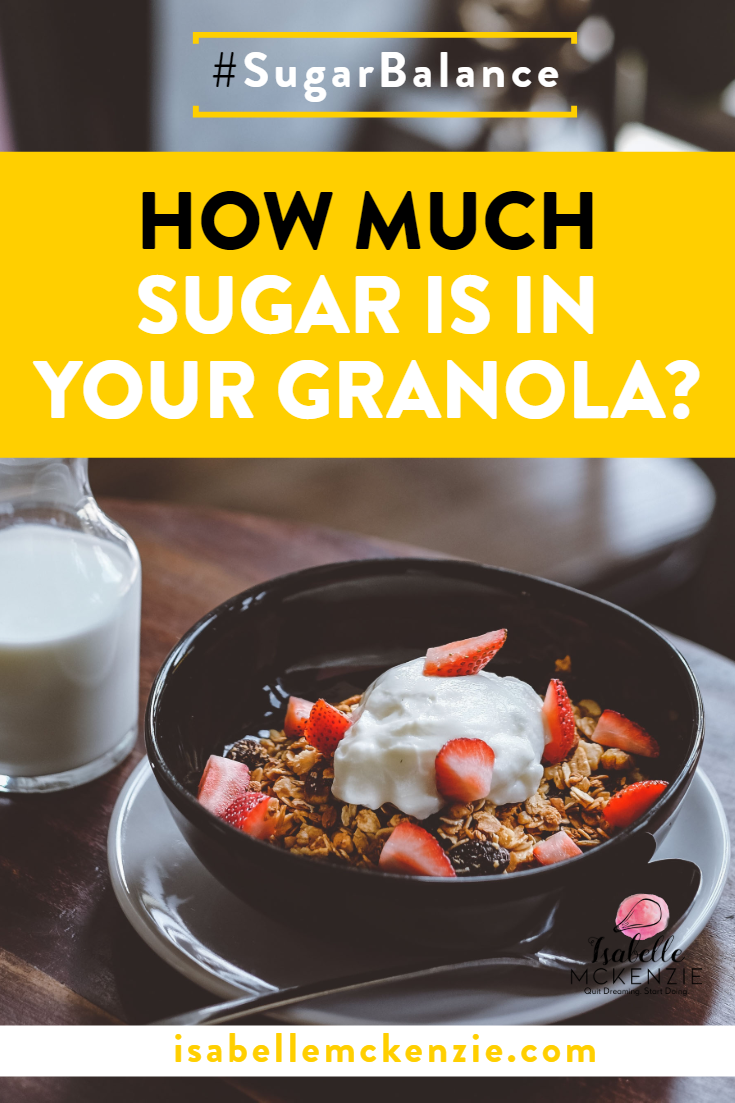
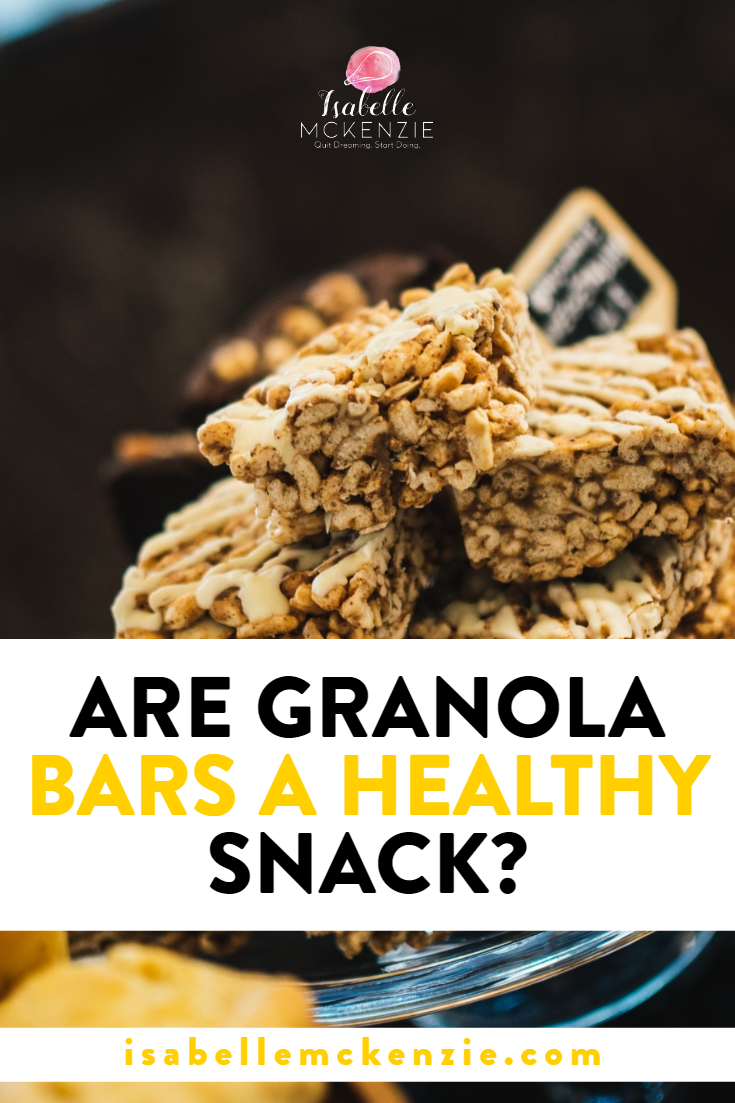
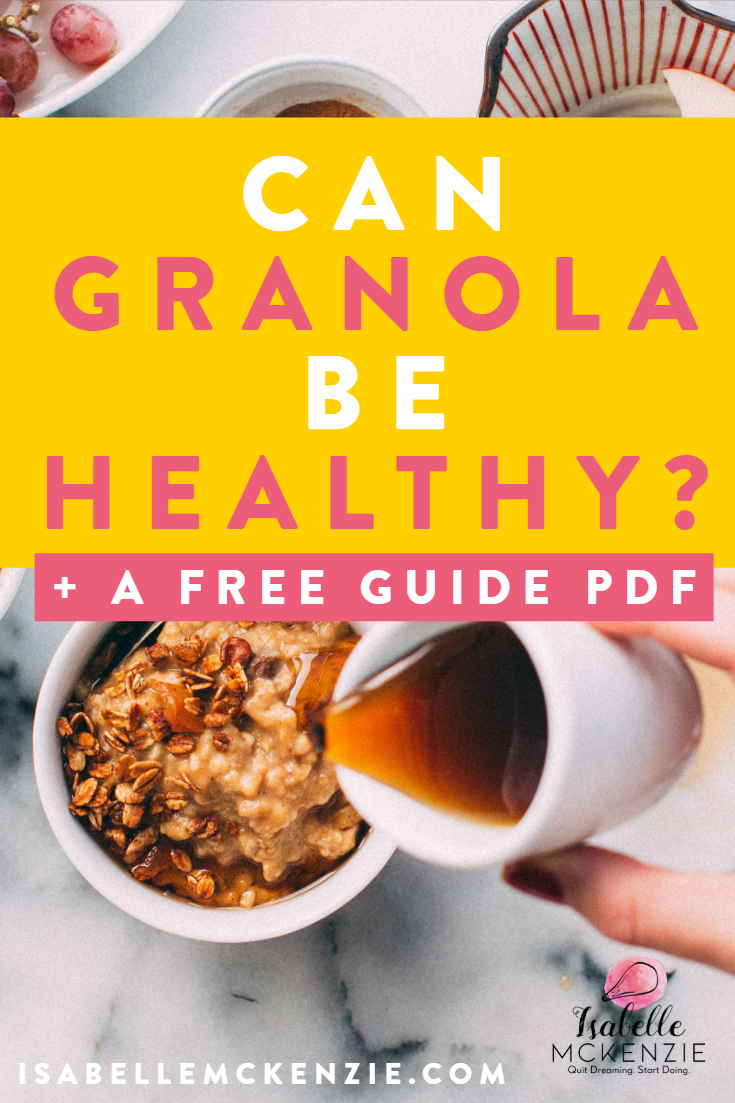


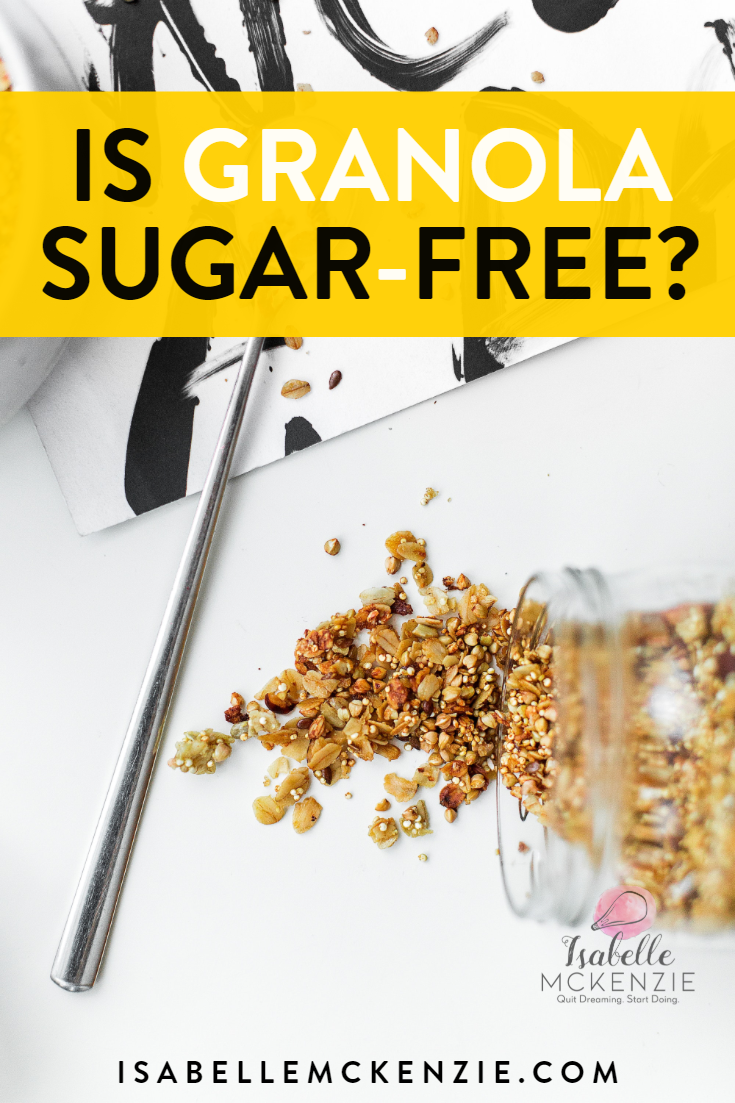
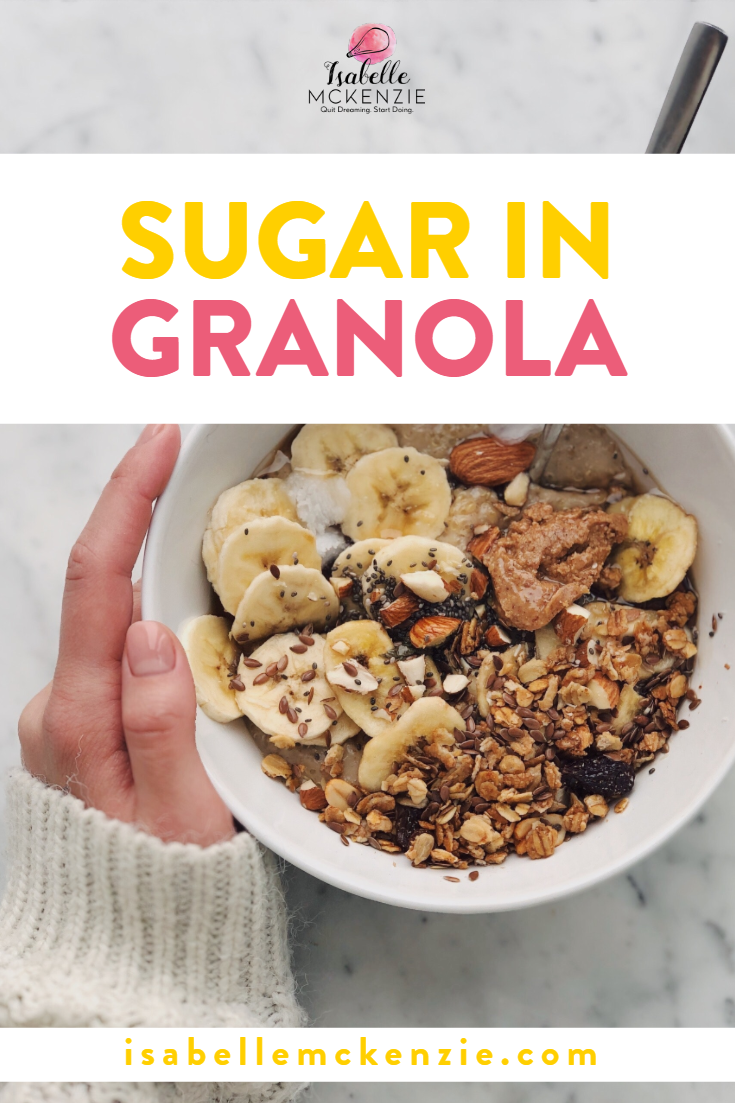













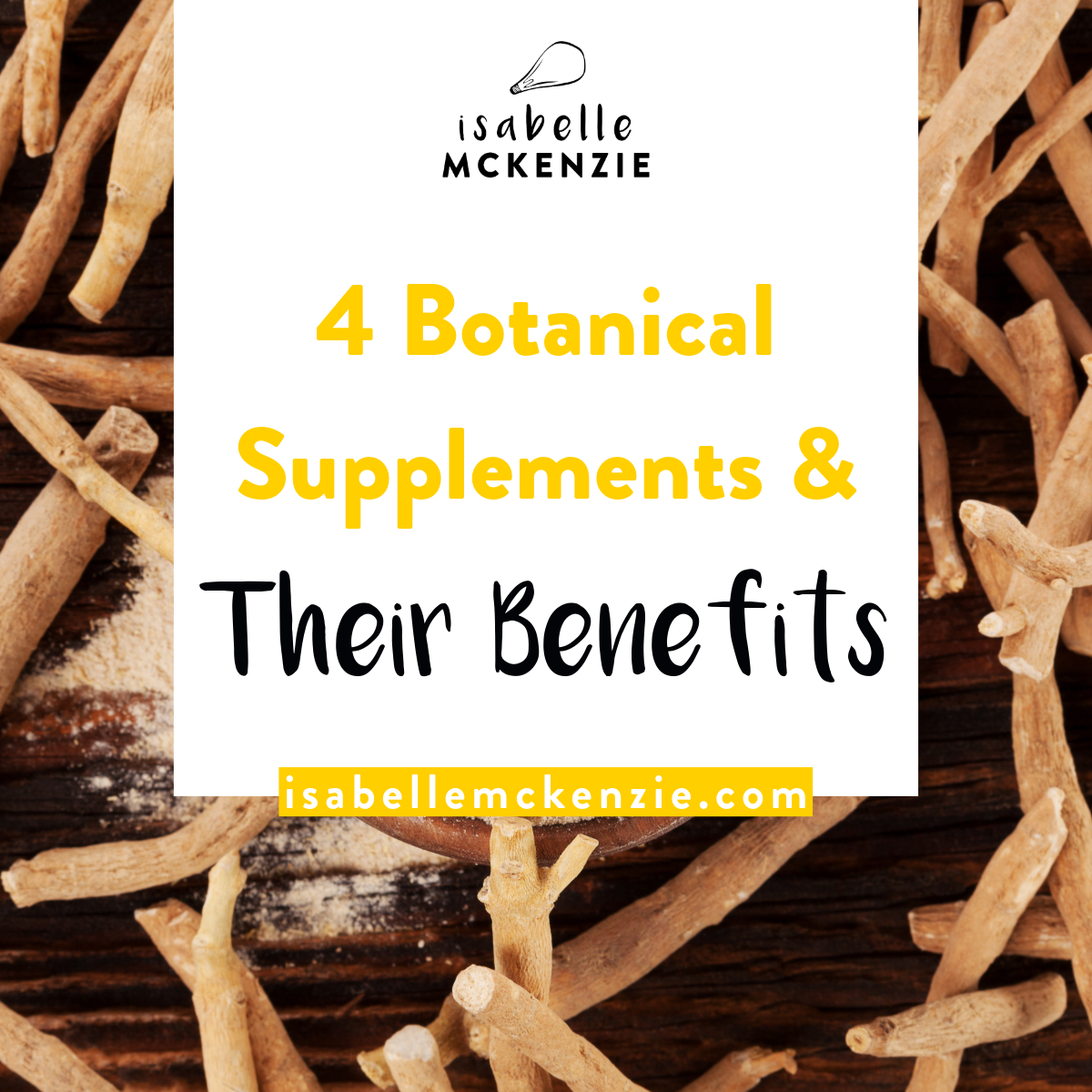
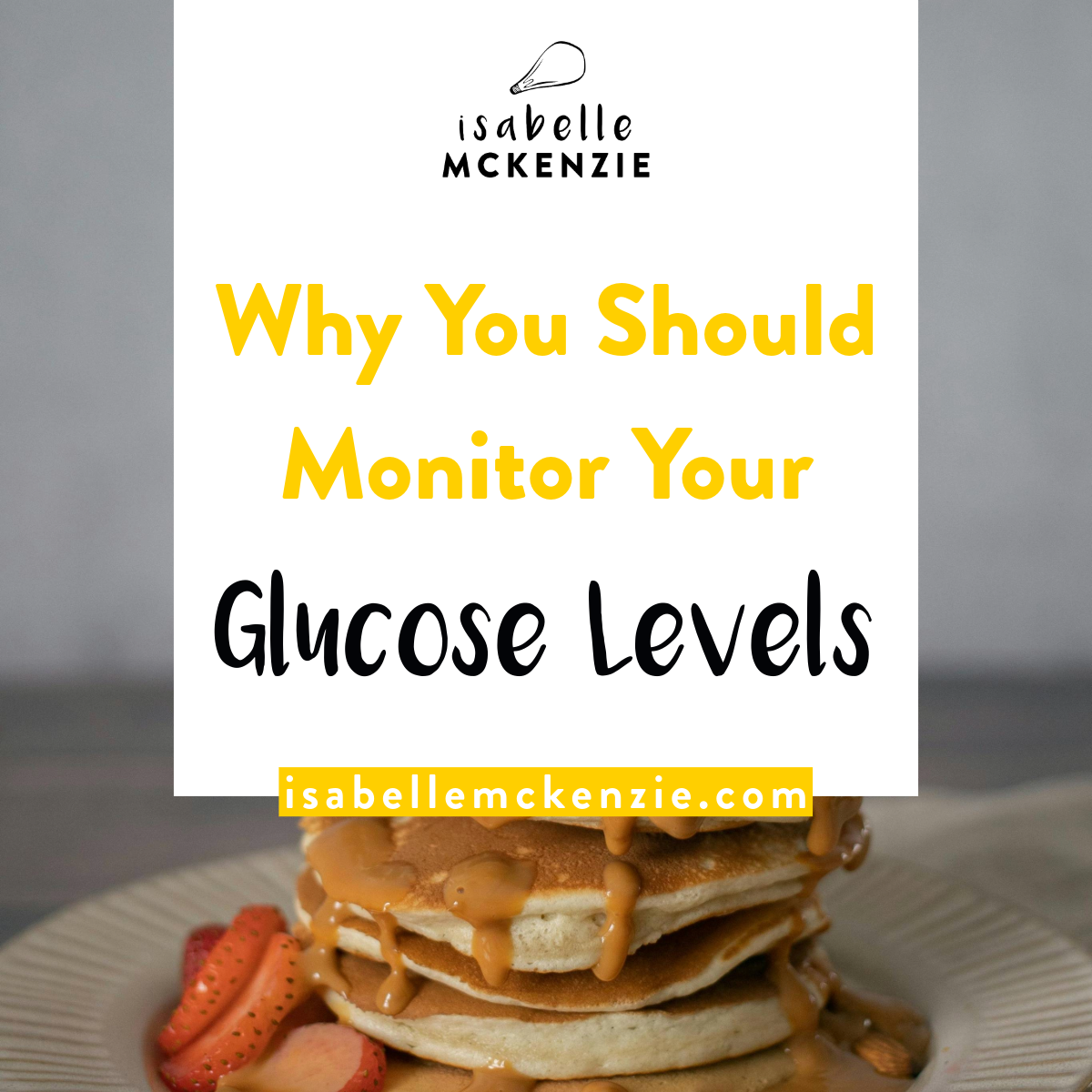



… yup, the Isabelle behind the IsabelleMcKenzie.com!
Instagram: @ItsIsabelleM | Pinterest: @ItsIsabelleM | Subscribe on Youtube
I’m dedicated to helping teach people how to live their happiest, healthiest life and reach their goals so that they can create the lifestyle of their dreams with integrity & purpose.
I focus on self-care, mind, body and health, dedicated to helping teach peeps how to live their happiest, healthiest life and reach their goals so that they can create the life that will have them jumping out of their bed in the morning to actually live!
Read More >